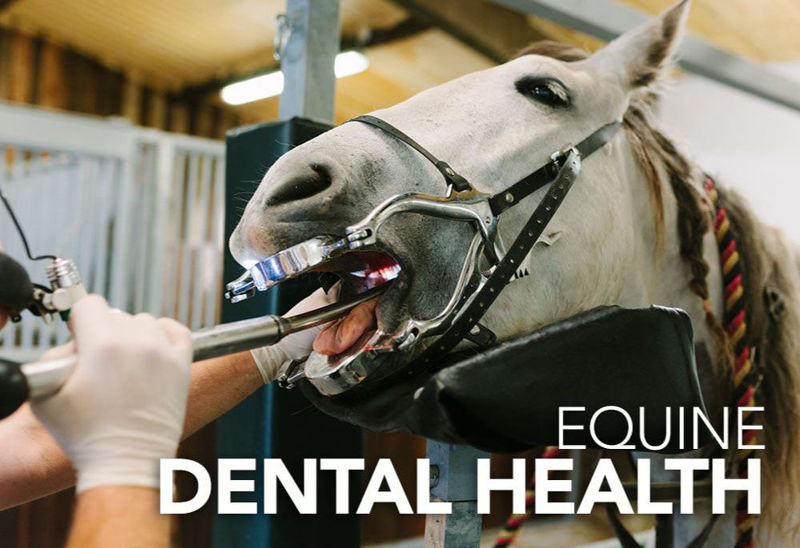When thinking of the digestive system many people start at the stomach but of course the digestive system starts with the mouth. The horse is a selective grazer, picking and choosing what it wants to eat using strong and tactile lips. The lips guide the food into the mouth where the sharp front teeth break off the food. The tongue then directs the food to the back of the mouth where the molars break the food down into smaller particle size. The food is mixed with salvia and forms a ball, or bolus, ready to be swallowed.
Horses have two sets of teeth in their lifetime. Their deciduous, or baby, teeth start to grow in shortly after birth and these teeth are usually lost between the ages of three to five. The deciduous teeth are replaced by the adult teeth, which continue to grow by approximately 3mm per year. Adult horses have 36 – 42 teeth. Male horses tend to have 40, while mares usually have 36–40, as they generally do not grow canine teeth.
Types of teeth
The horse has several different types of teeth which have different roles within the mouth;
Incisors used for breaking off grass or grabbing hay and feed. Horses have six upper and six lower incisors.
Premolars and molars used for chewing. Horses have twelve upper and twelve lower premolars and molars, with these being split evenly on each side of the horse’s jaw.
Canines mainly found in male horses, but a few mares also have them. These teeth are used for fighting in wild herd situations.
Wolf teeth up to 32% of horses have wolf teeth. They serve no purpose and as they can often interfere with bit placement they are usually removed.
The horse’s teeth are vital to ensure correct digestion, as they break down food into the correct particle size. In addition, chewing helps to release the soluble components of the feed ensuring optimal nutrient extraction. Salvia is also only produced when the horse is chewing, and salvia production helps to reduce the risk of choke, gastric ulcers and colic.
On occasion the molars can wear down irregularly resulting in sharp edges or hooks which can cause pain as well as an increased risk of choke and quidding. Older horses also tend to have more dental issues as the molars become worn down and ‘smooth’ making it harder for the horse to thoroughly chew their feed.
Problems
Problems associated with poor dentition include;
Quidding the horse spits out or drops moist, half chewed bits of forage. If your horse is quidding this is a clear sign that they are struggling with poor dentition.
Choke choke happens when the swallowed bolus of feed gets stuck in the horses’ esophagus, the muscular tube that leads from the mouth to the stomach. Horses suffering with choke will be highly distressed, coughing and often have food and salvia pouring from their mouth and nose. Choke most commonly happens when insufficient salvia has been produced, usually due to a lack of chewing.
Impaction Colic When in good condition the teeth will reduce hay and grass to less than 1.6mm in length. If larger particles of hay and grass and regularly being swallowed this can lead to impaction colic.
Weight loss if the horse is unable to eat due to teeth pain, or if they are unable to extract the nutrients from their feed and forage, they will lose weight.
Behavioural issues if the horse is in pain they can show behavioural issues, mainly when ridden, such as fussing with the bit, tossing and shaking the head, and general reluctance.
To help ensure their teeth are in good condition your horse should have annual dentist check-ups, or 6 monthly for youngsters, veterans and horses with teeth problems.
If your horse does have poor quality teeth they still need to eat a minimum of 1.5% of their bodyweight in forage per day. As much turnout as possible is ideal in these situations as generally grass needs less chewing than long stem forage, such as hay and haylage. When grass alone is not enough feeding short chop fibres, such as chaff, and soaked fibre products are also a good alternative to long stem forage sources.












